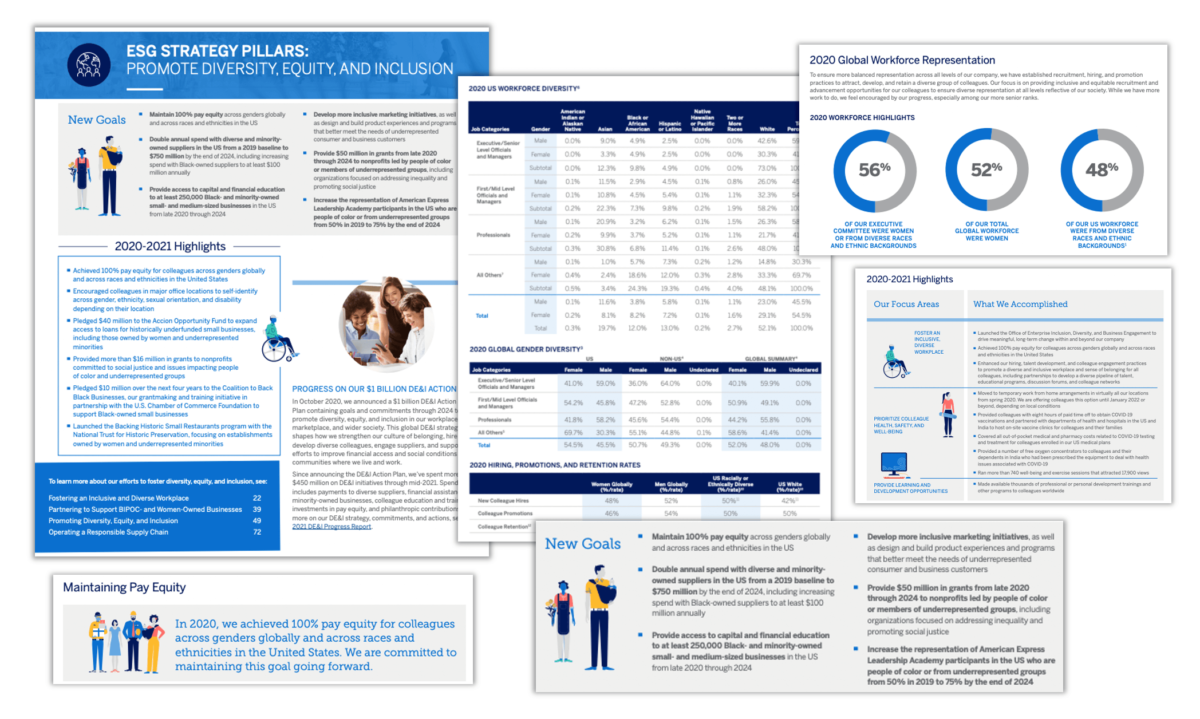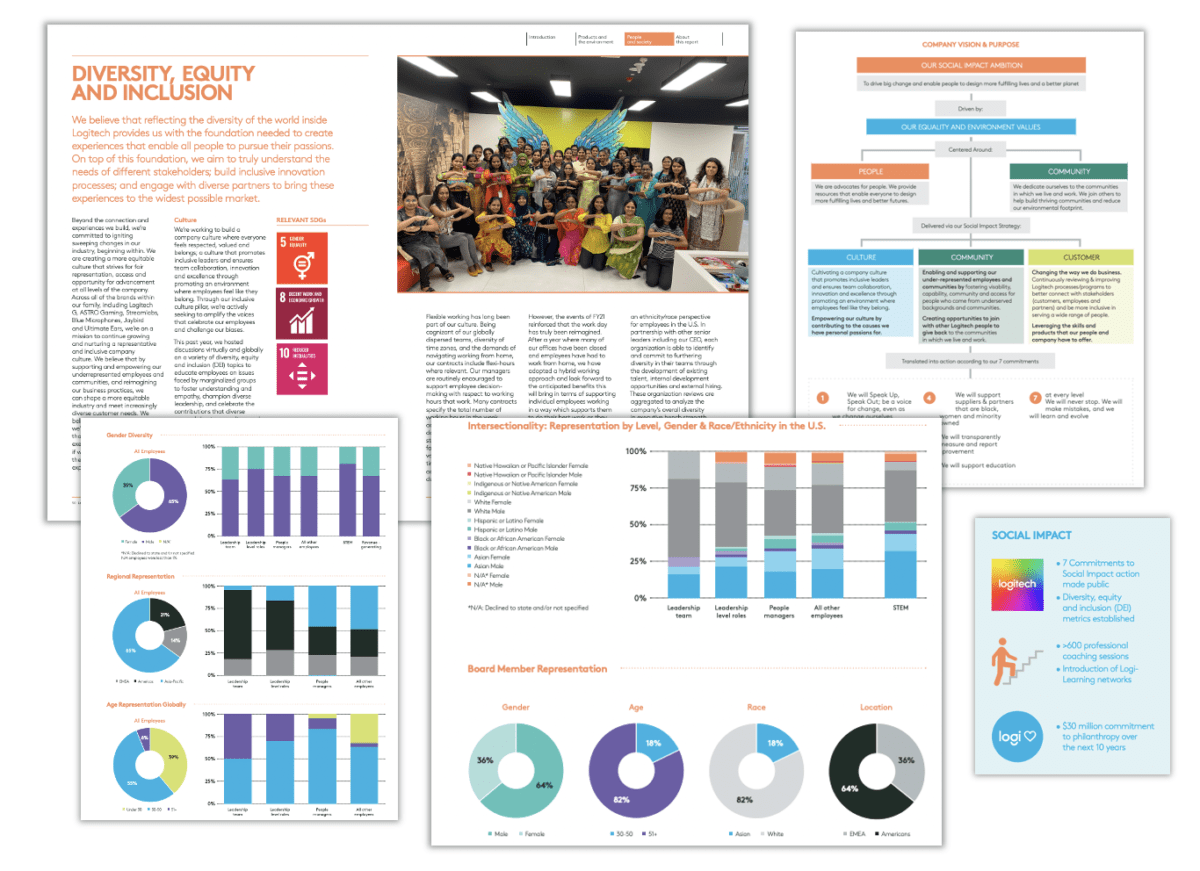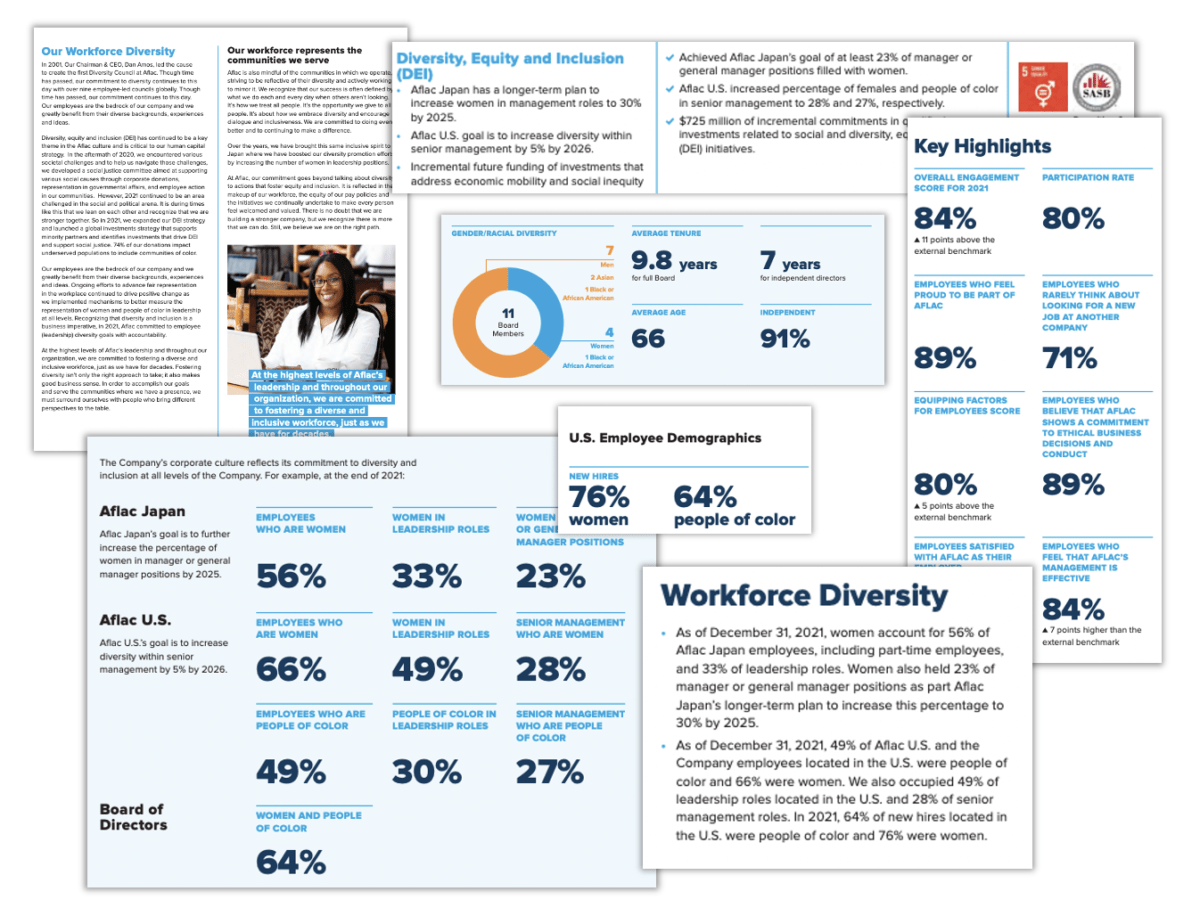This four-part series is brought to you by the letter ‘S’ in ESG — diving into what social impact means for companies, how focusing on workplace equity can help deliver on the ‘S’, how it is critical for business impact, solutions for reporting, and how to approach ESG communications internally and publicly.
Previous posts in our ‘S in ESG series have covered all the reasons for and benefits of reporting on ESG social impact metrics, as well as why workplace equity metrics should be a core component of measuring progress. We’ve also shared software solutions to help achieve progress on ESG social factors and impact metrics. The final step after efforts and measurement is transparency — communicating what you’ve been doing and what the outcomes are.
Sustainable investing and ESG social factors
Investors, boards, employees, job seekers, and consumers are increasingly demanding proof of progress that goes beyond pledges and commitments to show actual work being done. We’re even seeing how investor voting and financial performance have become tied to some ESG social factors. Leading brands are delivering on this call by providing accessible and visually compelling ESG reports that showcase social impact initiatives and outcomes.
To inspire your ESG communications, here are public examples of companies who are leading the way by sharing their ‘S’-related goals, metrics, and progress with clear visuals. How reporting looks varies across organizations, but these leading brands are setting themselves apart as they demonstrate how social impact transparency can become a brand advantage.
ESG communications example 1: American Express
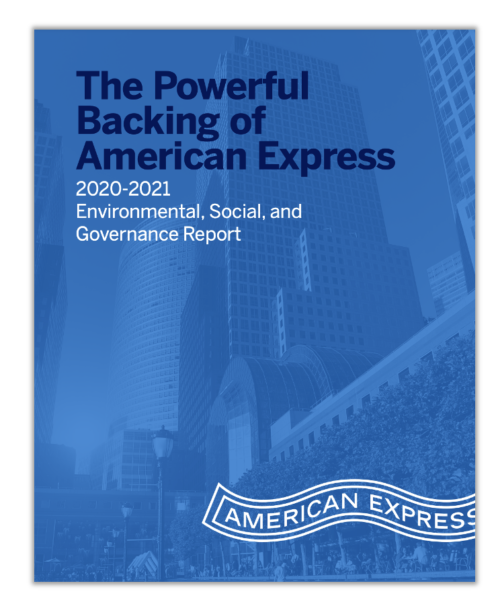
Pay equity: In the report, American Express emphasizes pay equity as a concrete metric and goal, stating their commitment to maintaining their achievement of 100% pay equity across genders globally and across races and ethnicities in the U.S. They outline their general compensation and pay equity analyses practices, and share how they moved from achieving pay “parity” to achieving 100% pay “equity”. They also state that they will further enhance pay transparency by sharing the raw median pay gap for women globally and across races and ethnicities in the U.S.
“Although pay parity is a meaningful achievement, we wanted to set an even higher standard for ourselves: to reach 100% pay ‘equity’— meaning no statistical differences—for all genders globally, as well as for colleagues of all races and ethnicities in the US. In 2020, we invested in all necessary and appropriate salary adjustments to reach our goal of 100% pay equity. We are proud of this achievement and are committed to maintaining this goal going forward.”
American Express 2020-2021 Environmental, Social, and Governance Report
Workplace diversity and inclusivity: The report includes charts and tables showing demographics and representation for their global workforce, U.S. workforce, board of directors, and executive committee by race and gender. They also share a summary table of their 2020 EEO-1 data and a link to their 2021 Diversity, Equity & Inclusion Progress Report.
Diversity in hiring and promotions: American Express shares the processes they have in place to improve the inclusivity of their hiring, interview, and professional development practices. The report provides a table showing their 2020 hiring, promotion, and retention rates. The report also highlights projects and initiatives the company has launched to support women leaders and employees from underrepresented communities and to improve inclusion for LGBTQ+ employees and employees with disabilities.
Other social impact highlights:
- List of corporate social responsibility, philanthropy, and social and human capital partnerships
- Deep-dive on ways that American Express is supporting BIPOC- and women-owned businesses through grants, investments, education, and business advocacy
- Outline of how the company is supporting communities through charitable giving, grants, support, and training, especially for DEI-related programs and partnerships
Example 2: Logitech
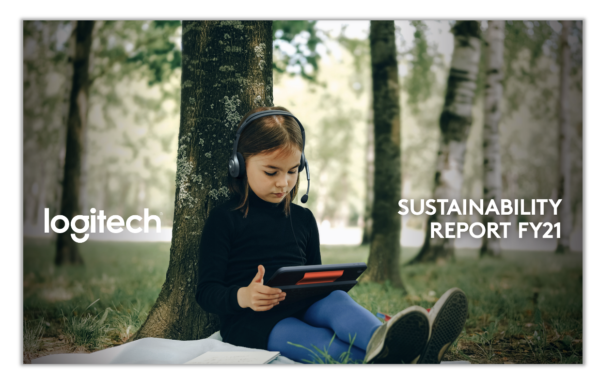
Social impact: The report connects the dots between Logitech’s company vision and purpose and their action plan for achieving their social impact goals, using a chart that illustrates how the company’s seven commitments ladder up to their impact on the company culture, community, and customer base.
“We are taking action to address the need for a more diverse, equitable, and inclusive society. We have outlined a seven-point plan to address injustice and create a more equitable world. Diversity, Equity and Inclusion (DEI) plans and goals are in place and we are actively cultivating a culture of inclusive leaders who work together to ensure that employees, suppliers, partners, and customers feel supported, and are part of a thriving, diverse community.”
Logitech FY21 Sustainability Report
DEI: The report provides the company’s overall inclusivity score. It also outlines Logitech’s initiatives and commitments related to improving diversity and inclusion within their business practices, supply base, communications, employees, and products. The report provides charts illustrating the current state of representation at the company broken down by race/ethnicity and gender, including charts that visualize the intersectionality of representation by job level, gender, and race/ethnicity.
Pay and opportunity equity: Logitech provides some visibility into their pay equity process and annual compensation review. Additionally, their Equality and Environment value describes the company’s belief in equal access to opportunity, stating, “Within Logitech, we work to offer equitable opportunities for each individual, regardless of gender, race, religion, sexual orientation, and more.”
Other social impact highlights: The report showcases Logitech’s efforts around charitable contributions, talent development, supplier development, ethics, privacy and security, human rights and labor, and employee safety, health, and wellbeing.
Example 3: Aflac
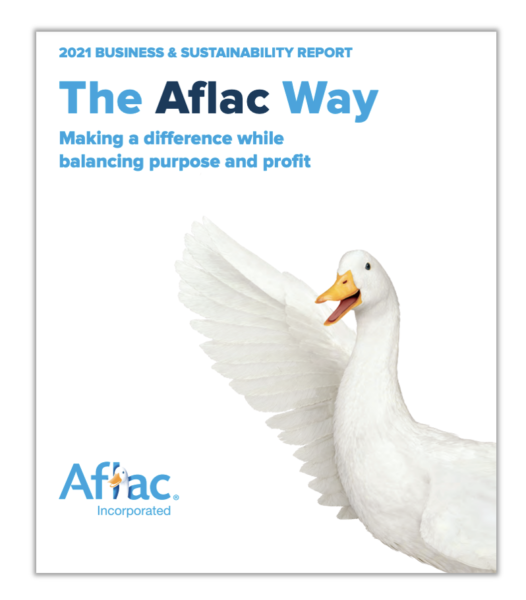
Workforce diversity: Aflac shares representation percentages for women at Aflac Japan across leadership and management roles, and representation percentages for people of color and women for U.S. employees and the board of directors. They also highlight DEI goals to increase management diversity as well as progress to date through programs such as their Women’s Empowerment Program and diversity councils. The report also provides a link to Aflac’s 2020 EEO-1 Disclosure.
“At Aflac, our commitment goes beyond talking about diversity to actions that foster equity and inclusion. It is reflected in the makeup of our workforce, the equity of our pay policies and the initiatives we continually undertake to make every person feel welcomed and valued.”
Aflac 2021 Business and Sustainability Report
Pay equity: The report describes Aflac’s commitment to global pay equity and their use of “ongoing analysis to ensure fair pay irrespective of gender or race/ethnicity.” It also summarizes how Aflac Japan is tackling pay equity through a new human capital management system, job grading, and annual monitoring.
Human capital management: Aflac shares their human capital management programs and resources that support employee wellness, work/life balance, and talent management. The report also provides scores for a variety of engagement and satisfaction metrics.
Other social impact highlights: The report shares details around community investments and philanthropic programs.
Zooming out: the big picture of transparency
The ESG reports showcased above demonstrate how proactively disclosing the ‘S’ in ESG can become a brand advantage in a world where this information influences investment analyses, career decisions, and consumer purchasing choices. Being transparent about your social impact goals, efforts, and achievements allows you to shape the overall narrative of progress at your company — what you’re doing to get from where you are today to where you want to be.
As we discussed in previous posts in this series, workplace equity metrics should become a key component of ESG social impact communications. Employees, job seekers, and investors are increasingly calling for accountability around metrics that measure equitable pay for similar work, equitable access to higher-paying roles, equitable starting pay, and equitable promotion and retention rates. And sharing these metrics is good for business: for example, companies who disclose two core workplace equity metrics — representation by job group and pay equity analyses — tend to see higher returns.
But ESG reports aren’t the only avenue for building a transparent culture around your company’s social impact progress, especially for metrics related to workplace equity. Our 2022 Workplace Equity Communications Lookbook below curates top-notch workplace equity communications examples including employee communications, data visualization, DEI&B (Diversity, Equity, Inclusion, and Belonging) reporting, and third-party validation. Take a look and inspire your own approach.
Did you miss previous posts in our series on the ‘S’ in ESG? Check them out here:
Part 1: Why Investing in and Reporting on the ‘S’ in ESG is Good for Business.
Part 2: The Top Workplace Equity Metrics to Use for Reporting on the ‘S’ In ESG
Part 3: How Software Helps You Achieve and Report on ESG Progress

